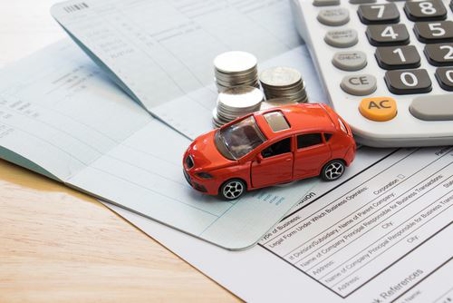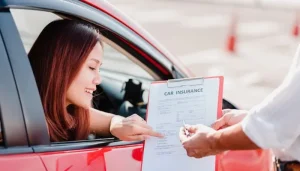Car insurance is a phrase that can be interpreted with pleasure and also vexation at the same time. It definitely has a sense of protection and peace, but come terms such as “coverage limits,” this is very reminiscent of quizzed students that haven’t prepared for the test! Relax; by the end of this post you will be talking about coverage limits as though you are an expert. While many people want to know how to reduce premiums, others are eager to know how they can get all-round coverage, and the key to doing so is knowing how coverage limits work. Let’s step on the accelerator and get started!
The Limits to Coverage in Auto Insurance
Alright, so what are coverage limits? To put it simply, a coverage limit is the uppermost sum that a car insurance company will pay out in the event that you file a claim with them for any damage to your vehicle. Consider it an insurance policy, but one that has the scope of ameliorating circumstances. For instance, if your policy has $50,000 coverage for bodily injury liability, then that would be the absolute figure the insurer would spend in a singular accident. Anything more, well then, you have to handle it yourself! Woot! Yikes right? The idea here is finding a happy medium—one where you are digging deep into your pockets but not too much to break the bank in premiums. Get this right, and you are set!
The General Principles of Coverage Limit Terms
Polices for car insurance have appended the terms ‘coverage limit’ and ‘category.’ Last but not least, there is the liability coverage category, which usually has thresholds for bodily injury and property damage.
In addition to that, personal injury protection (PIP) or medical payments also fall into the category that seeks to cover medical expenses. And lastly, collision and comprehensive coverage also need to be mentioned, and that coverage includes damage to your vehicle resulting from accidents, theft, or natural disasters.
Liability coverage also reveals some limitations, separate ones to be precise, such as its $30, 000, $60, 000, and $20, 000 limitations,, which refer to a per person, per accident, and property damage limit, respectively. Are you bewildered? It’s like a counter with different food items—each suffices a distinct objective. The only comforting thing is having an idea of these basics during policy revision, as you will be much more comfortable switching policy options.
Variables Determining Coverage Parameters
Why is your buddy paying less (or more) for the same insurance? At the end of the day, it all is a matter of personal bases. What drives this is firstly your driving history. If you keep your record clean, then your premiums might be lower than your coffee bill gets on Sunday’s. Next—definitely the area you reside in! A spike in premiums happens since accident statistics are higher in these locations having dense populations. And then your vehicle category: providing insurance for a luxury SUV get prepared for limits providing insurance for luxury SUVs means adjusting to limits that correspond with its expensive repair costs. And last but not least, state policies can also indicate basic insurance requirements; what is decent enough in Texas can be in for a rude shock when in California. Getting an understanding of these factors will allow you to be able to get your coverage tailored specifically for your requirements.
The Relevance of Well-Tailored Limits
Imagine this: you get into a minor collision with another car, and now you have to foot a medical bill to the tune of $75,000. But hold on a second. This is, you’re quiet about your $50,000 limit on the liability side, which hurts you as you see yourself paying the initial loss out of your own pocket, right? $25,000 to be precise. This is a low limit that has cost you. In the case of insurance coverage, it is a requirement that is also great for your peace of mind, as it makes you not only secure your mezmorizing mortgage for a charming beach vacation down the share market, but it will also safeguard all your other property.
So listen to this rather strange but helpful trick that could assist you. Don’t think about it too much; try to think more about the future. Do not try to look out for only minimum payment options, as this tends to reduce your repayments. It is far more efficient to pay an additional $10 monthly, which would assist you in seeking reasonable boundaries that are within your means. Trust us, at the farthest end in the future, the ‘You’ will appreciate doing this.
Reviewing Your Coverage Limits
It is an absolute myth that insurance is a one-off process! One’s life is bound to undergo changes, and perhaps that is the reason why your coverage limit needs to also alter whenever an issue arises. Did you just purchase a car? Please increase your limits since this will raise the car’s valuation. Did you relocate to a new neighbourhood that offers greater security? There’s a good chance you’ll be eligible for certain incentives. Aiming to stay within a certain amount of money for the entire household? If you don’t mind trading a little bit of quality for a little more money, then consider looking for various other alternatives or packages to see where certain aspects can save you and your family money.
The “what if” situations can be covered if add-on covers are purchased, like umbrella insurance or uninsured motorist coverage, which helps the individual adjust their limit accordingly. No matter the changes made, it is essential to know the workings of each in terms of its affect on premiums and level of protection.
Protecting What Matters Most
When it comes to coverage limits, every piece of information has the power to save money and also promote peace of mind. Now, you have all the resources to go through your car insurance and check how best you can make adjustments so that in the event there is an accident, all surprises will be avoided. Coverage limits don’t have to be a mystery; they’re a way to tailor your protection to fit your life perfectly.
FAQs
1. What happens if I exceed my coverage limit in an accident?
Your coverage limit is what you purchased, and anything above it will be your own personal liability. That could be from self-funding or even legal obligations.
2. How often should I review my coverage limits?
I would recommend that you do so at least once on a yearly basis or in the event of any major life event involving a new vehicle, an alteration of address, or any change of employment.
3. Are state minimum coverage limits enough?
Where laws are concerned, state minimum thresholds are the least amount; however, this is true usually to state laws
4. Can I raise my limits after an accident?
What you are asking for isn’t allowed. Nonetheless, you can raise your limits for all future coverage, which is why it is ideal to do so prior to any incident.
5. What’s the distinction between liability and full coverage?
Liability embodies covering damage you inflict on other people, while full coverage includes liability as well as insuring your vehicle against damage (collision and comprehensive coverage).



